|
The Odour of Chrysanthemums
by
Rachel Tseng, Vivian Lu, Claire Su, and Birdie Chang
D.H.
Lawrence
Fiction
Short
Stories
Plays
Summary
Characters
Human
Relationship
Thematic
Analysis
Powerpoint
Version
D.H.
Lawrence
|
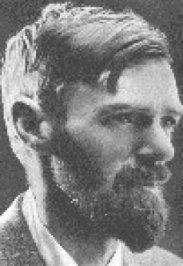
|
D.H.Lawrence is one of the 20th
century's most prominent writers. A novelist, playwright, poet and artist, his impact on the way we think about love, sex, and cultural decay has been very deep. His novels and poetry explore the social ills created by the Industrial Revolution and the role of sexuality in human relationships. The dialectic between man and woman is a chief theme in Lawrence¡¦s work. |
|
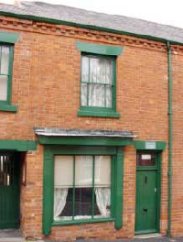
|
David
Herbert Richards Lawrence was born on September 11 1885,
in a small house in Victoria Street, Eastwood, near
Nottingham.
|
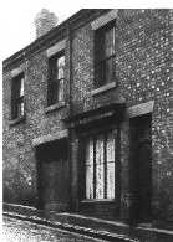
|
|

Greasley Beauvale Board School
Lawrence's early education was at Greasley Beauvale Board School, near Eastwood.
He won a scholarship to Nottingham High School.
Made few friends, Frieda Weekley, his future wife
Lawrence's father was a miner
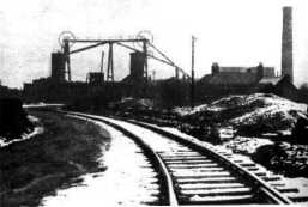
Brinsley Colliery - source of the Lawrence family
income.
|
|
In January 1911, his first novel, The White Peacock was published.
At the end of 1911, Lawrence became critically ill with pneumonia .
|
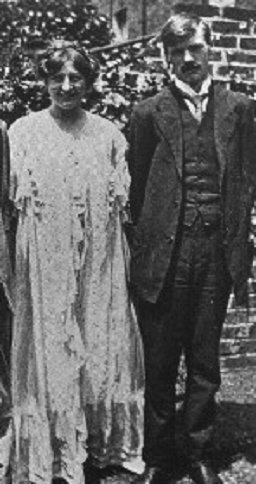
Lawrence
and Frieda on their wedding day |
Back
to Top
--
The White Peacock (1911)
-- The Trespasser (1912)
-- Sons and Lovers (1913) - published in Great Britain
-- The Rainbow (1915)
-- Women in Love (1920)- a homosexual relationship between William Henry Hocking and Lawrence.
During his last years Lawrence spent much of his time in Italy making only brief visits to England, the last in 1926. He died on 2 March 1930 at Venice in the south of France.
|
--
The White Peacock (1911)
-- The Trespasser (1912)
-- Sons and Lovers (1913)
-- The Rainbow (1915)
-- Women in Love (1920)
-- The Lost Girl (1920)
-- Aaron's Rod (1922)
-- Kangaroo (1923)
-- The Boy in the Bush (1924)
-- St Mawr (1925)
-- The Plumed Serpent (Quetzalcoatl) (1926)
-- Lady Chatterley's Lover (1928)
-- The Escaped Cock (The man who died) (1928/1929)
-- The Virgin and the Gipsy (1930)
-- Mr Noon part I and part II (1984) |
--
The Prussian Officer and other stories (1914)
-- England, My England and other stories (1922)
-- The Ladybird, The Fox, The Captain's doll (1923)
-- Sun (1926)
-- Glad Ghosts (1926
-- The Woman Who Rode Away and Other Stories (1928) |
--
Rawdon's Roof (1929)
-- Love among the Haystacks and Other Pieces (1930)
-- Travel writings
-- Twilight in Italy (1916)
-- Sea and Sardinia (1921)
-- Mornings in Mexico (1927)
-- Etruscan Places (1932) |
Back
to Top
Back
to Top
| ¡@
Part I
It was a winter day, the miners, single, trailing and in groups, passed diverging home at dusk. A woman, Elizabeth Bates, went out and watched the miners as they passed along the railway. After a moment her son, John, was called back to his house. He was unhappy to follow his mother. The mother and son stood at the foot of the three steps looking across the bay of lines of the miners going home. Suddenly, the engine stopped opposite the gate.
An old man, Elizabeth
Bates's father, asked a cup of tea from his daughter and talked to her about her husband¡¦s drunken behavior. She felt very bitter. Then, her father left but her husband did not come home. At 4:30 She waited for her husband to begin tea in the kitchen. She thought her husband probably was drunk and slunk past his own door. 4:45-- She scolded her daughter for coming tea late. Her husband didn¡¦t come home. They sat down to tea and she felt a little angry. 5:40-- She complained of her husband¡¦s drunk behavior and thought he was drunk in the pub. Then, she cleaned the desk. 5:40-6:30 Children played the game and the mother sewed a ¡§singlet¡¨. Her heart burst with anger at their father, who caused all three such distresses. Then, children went to bed, but their husband
didn't come home. She was not only angry but also fearful.
|
Part
2
8:00 Elizabeth Bates went out and looked for her husband. She saw a pub and thought her husband maybe was in this pub. But, she didn¡¦t enter. Then, she went to John
Rigley's house but he was not at home. His wife went out to look for her husband and Elizabeth Bates entered their house. When they came, John Rigley told her that her husband might have still stayed at the pit. Then, John Rigley continued to look for Walter and Mrs. Bates went home. At 9:03 She sat and listened the sound from the mine and felt uneasy.
9:45 Her mother-in-law went to keep Elizabeth company. They both felt uneasy. 10:30- Matthews and Jim carried
Walter's corpse into the parlor. Walter's mother and Elizabeth felt so sad. Then, Annie woke up and wanted to see her father, but her mother didn¡¦t want her to go downstairs. After the colliers left, they stripped his clothes and washed his dead boy. When they touched his body, they had different feelings. His mother felt ¡§the lie was given to her womb¡¨; the wife felt the utter isolation of the human soul, the child within her was weight apart from her. At last it was finished. They put clothes on him and locked the
parlor's door. Then, she realized something and felt peaceful. Her responsibility now is to her children. |
¡@Back
to Top
| Characters
Elizabeth Bates
-- a Housewife, a tall woman of imperious mien
-- a handsome woman with definite black eyebrows
-- a serious mother. (She doesn't allow her son to go down at wet brook.)
-- a pregnant woman. (She is five or six months pregnant.)
-- mother love. (She loves her children.)
-- serene/calm (When she faces her husband's corpse, she keeps from weeping.)
-- pertinacious (She thinks her husband may just stay in a pub, but she refuses to enter.)
-- genteel (She is better educated than her husband.)
-- neat (When a man knocks off a vase, she picks up the broken vase and the flowers quickly)
Walter
-- Elizabeth Batess husband who likes drinking
-- a miner
-- a man of handsome body (He is blond, full-fleshed, with fine limbs.)
-- a dead body now, half naked, all grimed with coal-dust
John
-Elizabeth Bates's son
-a small, sturdy boy of five
-with silence and pertinacity (like his mother)
-indifference to all but himself (like his father)
(When he is sullenly struggling with the wood, her mother sees his personality from herself and his father.)
Annie
-- Elizabeth Bates's daughter
-- a solicitous daughter (She shows great solicitude about her father.)
-- a naïve girl. (She likes odor of chrysanthemum and thinks fire is beautiful.)
Elizabeth
Bates's father
-- the engine-driver
-- a short man with round gray beard
Elizabeth Bates's mother-in-law
-- an elderly woman about sixty years old (She has wrinkles all of her face.)
-- loves her son, Walter, as most of mothers do.
-- Jealous toward Elizabeth, her daughter-in-law
Jack Rigley
-- a miner
-- Elizabeth Bates's neighbor
-- a big man (He is with very large bones and his head looks particularly bony.)
has a blue scar (The scar is across his temple, caused by a wound gets in the pit.)
uneducated (known from his conversation.)
Mrs. Rigley
-- a housewife who is Jack Rigley's wife
-- the raw-boned woman, with many children and has happy family
-- has many children and has happy family (It is from the shoes on the doorway
-- uneducated (It is from her conversation.)
Matthews
-- the manager of the pit
-- a short, white bearded man
-- carries Walter¡¦s corpse
Jim
-- a miner
-- carries Walter's corpse
|
Back
to Top
| Human
Relationship
1. Elizabeth isolated herself from
Walter
-- She was dissatisfied with her marriage. She kept judging her
husband's ¡§indifference¡¨ to all but himself as a drunkard since their wedding ceremony. (2321)
¡§what a fool I¡¦ve been, what a fool! And this is what I came here for, to this dirty hole, rats and all, for him to slink past his very door.¡¨ (2321)
¡§what a separate stranger he was to her¡K.Each time he had taken her, they had been two isolated beings, far apart as now¡¨ (2329)
¡§She saw this episode of her life closed. They had denied each other in life.¡¨ (2330)
--
Elizabeth and Walter never tried to comprehend each other caused the failure of their marriage (2329).
¡§ she had never seen him, he had never seen her, they had met in the dark¡K.Whereas he was apart all the while, living as she never lived, feeling as she never felt.¡¨ (line 6)
¡§She had denied him what he was-¡K And this had been her life, and his life.¡¨ (line 4)
¡§She was a mother- but how awful she knew it now to have been a wife.¡Khow awful he must have felt it to be a husband.¡¨ (line 6)
2. Elizabeth vs. her Mother-in-law
Elizabeth and Walter's mother are alike in their relationship with their children. They reveal ¡§mother love¡¨ and bring ¡§great strange emotions¡¨ when touching Walter¡¦s dead body. For example, the mother-in-law keeps crying, but feeling ¡§the lie was given to her womb¡¨. By comparison, Elizabeth feels ¡§the utter isolation of the human soul, the child within her [is] a weight apart from her¡¨ (2328). She is emotionally strong, not only protecting John and Annie, but trying to calm her mother-in-law as now Walter is dead. (2322, 2326)
However, though the children did not unite she and Walter, ¡§they are my business¡¨, as she said. At last, only the children belonged to life, ¡§this dead man had nothing to do with them. He and she were only channels through which life had flowed to issue in the children.¡§ (2399 line 5)
3. Elizabeth revealed her alienation in human
relationship
Elizabeth vs. her father
-She didn't expect her father's care and help. (2318)
Elizabeth vs. her husband
-She never would go into ¡§Prince of Wales¡¨, although she knew her husband might be there. (2322)
Elizabeth vs. her husband's co-worker
-She ¡§wouldn¡¦t think of brothering¡¨ Mr. Rigley to look for husband.
(2323) |
Back
to Top
| Thematic Analysis
Elizabeth's awakening after her
husband's death: She realizes the failure of her marriage and starts to think about her identity.
-- p. 2329, para. 3, L 8, L10, L15
-- p. 2329, para. 4, L 7
For Elizabeth, death helps her to see the truth of the failed marriage.
Chrysanthemums in
Elizabeth's mind:
1. ¡§Chrysanthemums¡¨ and her attitude towards them
--p. 2318, L1 from the top
--p. 2327, L3 from the top
2. The times chrysanthemums appear bring Elizabeth some good and bad memories
-- p.2321, L3 from the top
-- p.2326, para.8, L3 |
Back
to Top
|